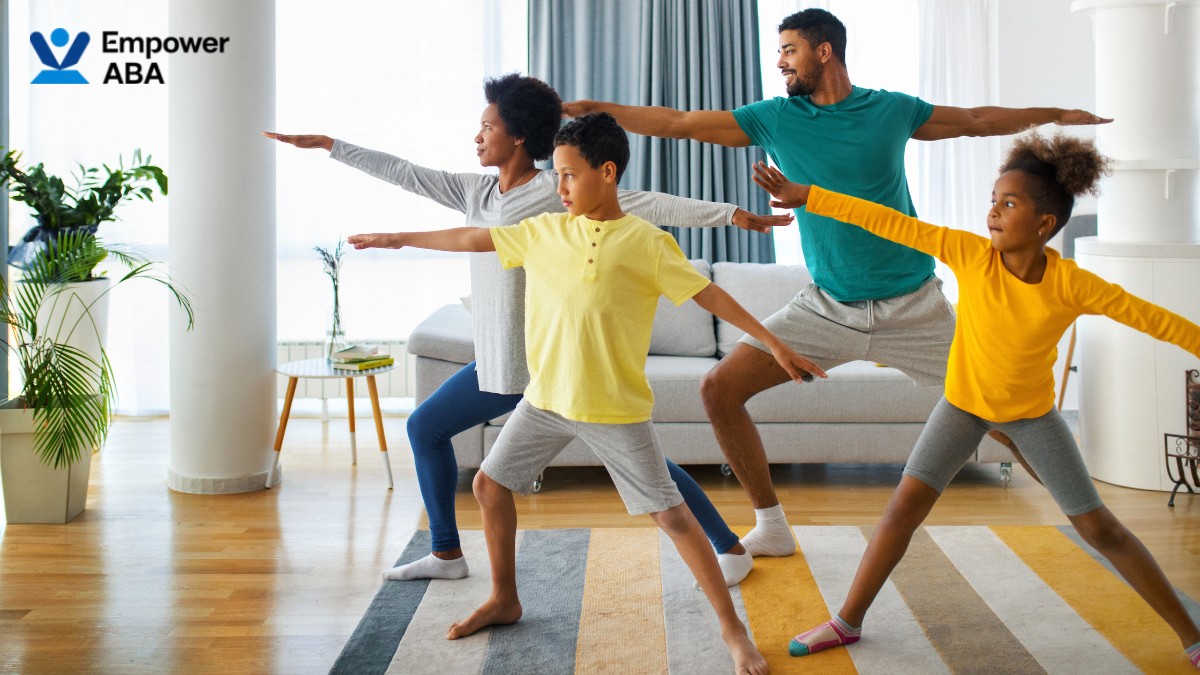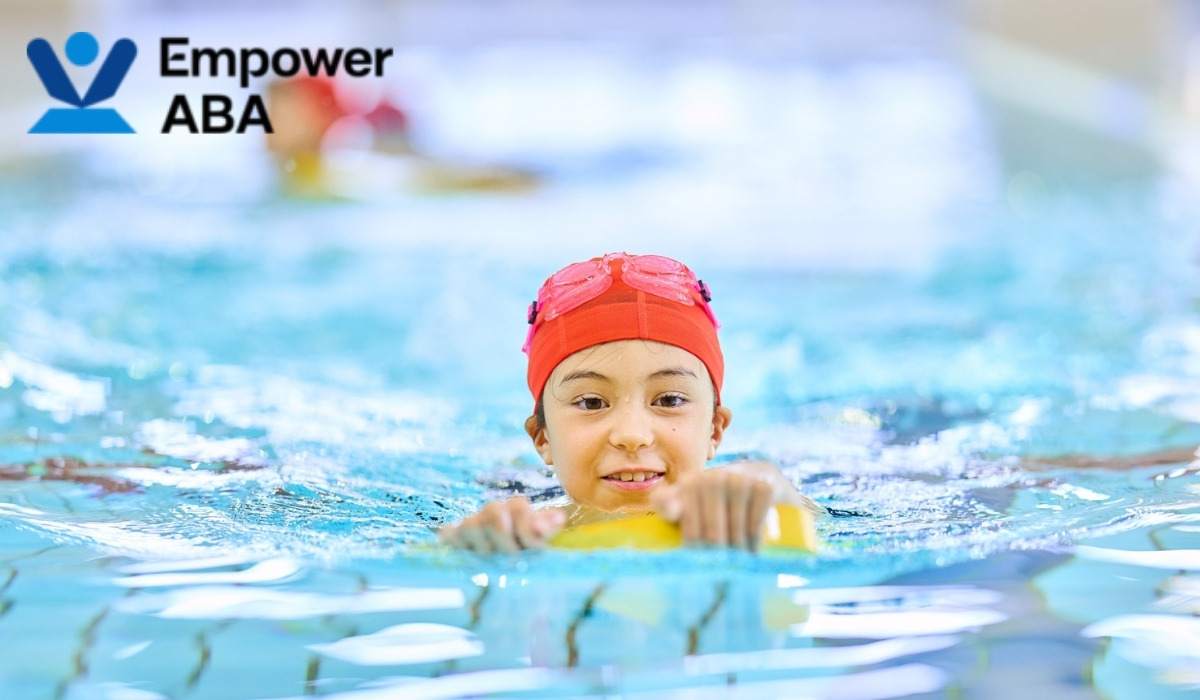Key Points:
- Exercise can help autistic children with motor skills, behavior, and emotional regulation.
- Physical activity supports social development and reduces anxiety in many autistic individuals.
- Experts recommend tailoring activities to each child’s abilities and interests for the best results.
Every parent wants the best for their child. When navigating life with autism, it’s natural to seek tools and routines that can make daily life more manageable—and joyful. One question that often comes up is, “Is exercise good for autism?” Parents may wonder if movement helps or overwhelms their child. Fortunately, there’s growing evidence and expert consensus that physical activity can be a powerful support tool for children on the autism spectrum.
Is Exercise Good for Autism?
Yes—experts widely agree that exercise is beneficial for autism. Movement isn’t just about fitness. For children with autism, regular physical activity can improve mood, reduce anxiety, support better behavior, and even strengthen social connections.
This article breaks down how and why exercise works for autistic individuals, the types of activities that are most effective, and how parents and caregivers can incorporate movement into their child’s daily life in a way that feels fun and safe.

How Does Exercise Help Autistic Children?
Exercise does more than just tire out energetic kids. For those on the autism spectrum, it offers specific developmental and emotional benefits. Let’s look at how movement impacts the mind and body.
Improves Motor Skills and Coordination
Many autistic children face delays or difficulties in motor skills, such as balance, coordination, and hand-eye coordination. Exercise helps build these skills in a natural and fun way.
Physical activities like jumping, climbing, running, and even simple yoga poses can support:
- Balance and posture
- Muscle strength
- Fine motor control (e.g., catching or throwing a ball)
Improving motor skills through exercise can also increase confidence and reduce frustration in other areas of life, like schoolwork or self-care.
Supports Emotional Regulation
Children with autism often experience heightened emotional responses. Exercise is a healthy way to channel emotions and regulate mood.
Movement supports emotional health by:
- Releasing endorphins, the body’s natural “feel-good” chemicals
- Lowering cortisol levels (linked to stress)
- Providing sensory input that can calm the nervous system
Regular physical activity can make transitions easier, help with focus, and even reduce meltdowns.
Encourages Social Interaction
Group exercise, sports, or movement-based games create natural opportunities for social interaction. These environments allow children to:
- Practice turn-taking
- Develop cooperation and teamwork
- Learn body awareness and boundaries
Even nonverbal children benefit by engaging alongside peers, observing social norms, and enjoying shared experiences.
Which Exercises are Best for Autism?
There’s no one-size-fits-all answer, but many activities have been shown to help autistic children thrive. The key is to focus on your child’s interests and sensory preferences.
Here are a few popular options that many families find helpful:
- Swimming: Gentle on joints and offers full-body movement plus calming sensory input.
- Trampolining: Provides rhythmic bouncing that supports sensory integration and can be very soothing.
- Martial Arts (e.g., Karate, Taekwondo): Builds discipline, focus, and confidence in a structured environment.
- Walking or Hiking: Simple and adaptable for almost any age or ability level.
- Yoga: Encourages mindfulness, body awareness, and calming deep breathing.
- Dance or Movement Games: Stimulates creativity and rhythm, great for both solo or group play.

How Often Should Children with Autism Exercise?
Consistency is more important than intensity. A little movement every day can make a big difference in mood and behavior.
Experts suggest:
- 30–60 minutes a day, broken into smaller sessions if needed
- Include a mix of structured and unstructured play
- Try to incorporate movement into daily routines (like dancing after breakfast or walking before dinner)
Even five-minute bursts of jumping jacks or stretching can help reset the brain and body throughout the day.
Tips for Making Exercise Fun and Safe
Introducing physical activity doesn’t need to feel like a chore. Here are practical ways to help your child enjoy movement, safely and consistently.
Start Small and Build Gradually
It’s okay to start with just a few minutes a day. Celebrate small wins and build up from there.
Follow Your Child’s Lead
Notice what types of movement your child enjoys naturally. Some kids love water; others may prefer swinging or jumping.
Make It Predictable
Create a visual schedule or use timers to show when it’s time to move. Predictability helps reduce anxiety and resistance.
Offer Choices
Give options: “Would you like to go for a walk or play with the ball?” Autonomy helps children feel more engaged.
Prioritize Safety
Make sure the environment is secure, especially for children who have a tendency to wander, trip, or become overstimulated.
Exercise at Home: Simple Ideas to Get Started
You don’t need fancy equipment or a gym membership to get moving. Many effective activities can happen right at home.
Here are a few accessible options to consider:
- Obstacle Course with pillows, chairs, and tape
- Animal Walks (bear crawl, crab walk, frog jumps)
- Balloon Volleyball for gentle hand-eye coordination
- Bubble Chasing to encourage running and laughing
- Stretch-and-Sing Songs like “Head, Shoulders, Knees, and Toes”
Rotate activities to keep things fresh, and don’t worry about perfection—fun and effort are what count.
What If My Child Doesn’t Like Exercise?
Not all children take to movement right away—and that’s okay. It may take time, creativity, and patience.
Try these tips if your child resists physical activity:
- Use interests to guide play (e.g., dinosaurs = stomping games)
- Join in yourself—modeling can be powerful
- Pair exercise with rewards like favorite music or screen time
- Start with sensory-friendly activities, especially for kids who are easily overwhelmed
Be patient. The goal is to find the type of movement that feels good to your child—not to follow someone else’s routine.
Empower ABA: Supporting Growth Through Movement and More
Exercise can be a great support tool—but it’s not the only one. For many families, the structured guidance of ABA therapy makes all the difference.
At Empower ABA, we help children develop life skills, manage behavior, and reach their full potential. Our therapy programs are tailored to each child’s needs and often incorporate movement and play to support learning.
Whether your child is just beginning their autism journey or is working on new milestones, we’re here to help. We proudly offer ABA therapy in Virginia, New York, and New Jersey, delivered by compassionate professionals who understand the unique needs of every family.
Let’s build a brighter, stronger future together. Reach out to us today to learn how therapy can support your child’s growth—physically, emotionally, and socially.

